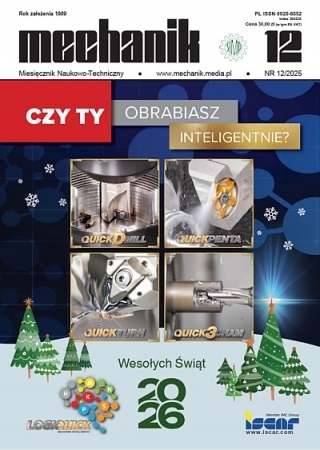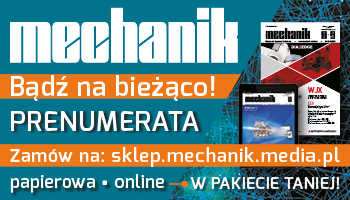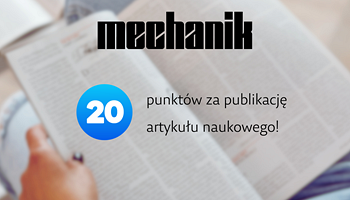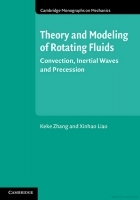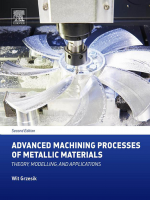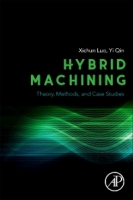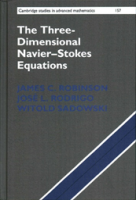Development of techniques improving functional and programming abilities of intelligent CNC machine tools
Rozwój technik wspomagania funkcjonowania i programowania inteligentnych obrabiarek CNC *
Author: Krzysztof Jarosz, Wit Grzesik
Mechanik nr 07/2024 - Obrabiarki
ABSTRACT: This paper covers the areas of importance in the development of intelligent machine tools (IMTs), including: information/knowledge-based computing, advanced virtual modelling of machining systems, real-time process simulations with the use of digital twins (DTs) and intelligent control strategies based on the STEP-NC standards. Select examples of current industrial implementations are discussed, along with prognosing of future development trends. Moreover, the importance of human–machine interaction (HMI) and considering operator behavior and skill levels in the development of HMI is signified.
KEYWORDS: intelligent machine tool, information exchange, virtual simulation, STEP-NC interface
STRESZCZENIE: W artykule przedstawiono ważne kierunki rozwoju inteligentnych obrabiarek CNC obejmujące: przetwarzanie wiedzy/informacji, zaawansowane modelowanie wirtualne systemu obróbkowego, symulację procesu w czasie rzeczywistym z wykorzystaniem techniki bliźniaka cyfrowego oraz inteligentne sterowanie na bazie interfejsu STEP-NC. Podano przykłady współczesnych osiągnięć w skali przemysłowej i wytypowano kierunki dalszego rozwoju. Wskazano na ważną rolę doświadczenia i zachowania operatora w doskonaleniu interakcji z interfejsem człowiek–maszyna (HMI).
SŁOWA KLUCZOWE: inteligentna obrabiarka, wymiana informacji, symulacja wirtualna, STEP-NC interfejs
BIBLIOGRAFIA / BIBLIOGRAPHY:
[1] Moriwaki T., Shirase K. „Intelligent machine tools – current status and future direction”. International Journal of Manufacturing Technology and Management. 9, 3/4 (2006): 204–218, https://doi.org/10.1504/IJMTM.2006.010055.
[2] Zalewski A., Grzesik W., Deja M., Jarosz K., Ruszaj A. „Podstawy funkcjonowania i programowania obrabiarek CNC.Procesy ubytkowe, przyrostowe i hybrydowe”. Warszawa:PWN (2024 w druku).
[3] Lou P., Liu S., Hu J., Li R., Xia Z., Yan J. “Intelligent machine tool based on edge-cloud collaboration”. IEEE Access.8 (2020): 139953–139965, https://doi.org/10.1109/ACCESS.2020.3012829.
[4] Grzesik W. „Podstawy skrawania materiałów konstrukcyjnych”. Warszawa: PWN (2018).
[5] Yamato S., Sencer B., Beaucamp A. “Tool path planningand feed scheduling for time dependent processes”. Tolio T. (ed.). “CIRP novel topics in production engineering”: 1 (2024): 185–231.
[6] Witt M., Schumann M., Klimant P. “Real-time machine simulation using cutting force calculation based on a voxelmaterial removal model”. International Journal of Advanced Manufacturing Technology. 105 (2019): 2321–2328, https://doi.org/10.1007/s00170-019-04418-2.
[7] Grzesik W. „Digital twin in manufacturing. Part I. State of the art, architecture and applications”/„Cyfrowy bliźniakw procesach wytwórczych. Część I. Stan zagadnienia, architektura i zastosowania”. Mechanik. 1 (2023): 8–13, https://doi.org/10.17814/mechanik.2023.1.1.
[8] Jarosz K., Özel T. “Machine learning approaches towardsdigital twin development for machining systems”. International Journal of Mechatronics and Manufacturing Systems, 15. 2–3 (2022): 127–148, https://doi.org/10.1504/IJMMS.2022.124922.
[9] SINUMERIK. Inteligentne rozwiązania dla obrabiarek, www.siemens.pl/sinumerik.
[10] Jeon B., Yoon J.S., Um J., Suh S.H. “The architecture development of Industry 4.0 compliant smart machine toolsystem (SMTS)”. Journal of Intelligent Manufacturing. 31,8 (2020): 1837–1859, https://doi.org/10.1007/s10845-020-01539-4.
[11] “STEP/STEP-NC as a Solution for Data Interoperability inthe CAx Chain”, https://ukdiss.com/examples/step-step-nc-data-interoperability-cax-chain.php.
[12] Zhang Y., Yu X., Sun J., Zhang Y., Xu X., Gong Y. (2022). “Intelligent STEP-NC-compliant setup planning method”.Journal of Manufacturing Systems, 62 (2022): 62–75, https://doi.org/10.1016/j.jmsy.2021.11.002.
[13] Liu C., Xu X. “Cyber-physical machine tool – the era of machine tool 4.0”. Procedia CIRP. 63 (2017): 70–75, https://doi.org/10.1016/j.procir.2017.03.078.
[14] Grzesik W., Żak K., Tomkiewicz-Zawada A. „Analiza i modelowanie powierzchni w obróbce ubytkowej”. Warszawa:PWN (2023).
[15] Jarosz K., Yan-Ting Chen Y.-T., Liu R. “Investigating the differences in human behavior between conventionalmachining and CNC machining for future workforce development: A case study”. Journal of Manufacturing Processes. 96 (2023): 176–192, https://doi.org/10.1016/j.jmapro.2023.04.037.
DOI: https://doi.org/10.17814/mechanik.2024.7.12
* Artykuł recenzowany




